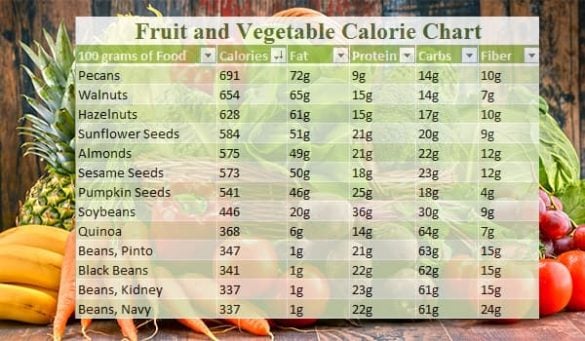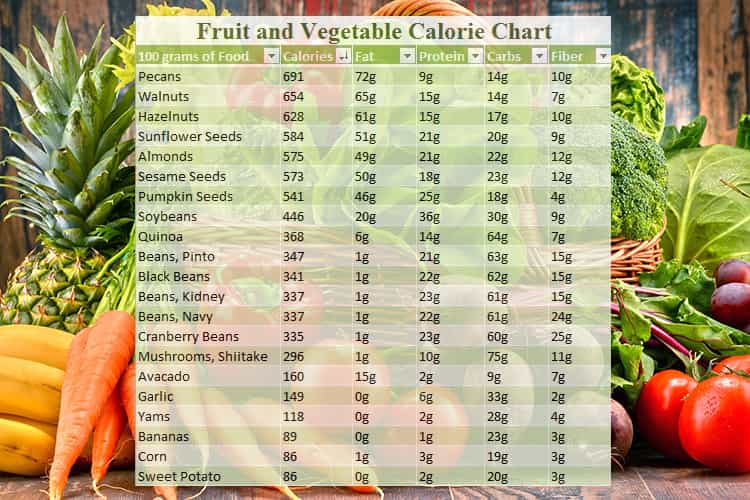
Indian food is a favorite for most Indian people, as it is loaded with flavor and lesser calories, in comparison with other cuisines. Several of these dishes are rich in calorie-free spices and herbs. But, you should take care of where these extra calories are coming from. A lot of yogurt, cream, and oil are used in many of the Indian dishes, which leads to supplying artery-clogging saturated fats to your diet.
Nutritional Overview:
When it comes to nutritional facts of Indian food, you may be unaware that few vegetarian foods are unhealthy too. Many of the Indian vegetarian meals make use of oil, and clarified butter (ghee). This may be same with meat-containing meals. As there are several dishes loaded with lean proteins, beans, and veggies, the nutritional content present in Indian food is rich.
You can alternate foods that make a great substitute. For instance, naan can be replaced with brown basmati rice.
For getting the maximum nutritional benefits from Indian dishes without additional fat that you get from cream-based meals, you may try masala, saag, and tandoori dishes. You may cut down on your meals by having a cup of tea for added antioxidants.
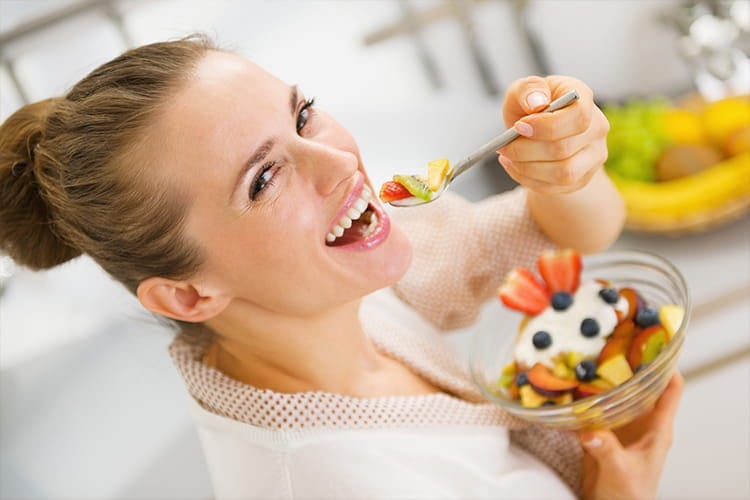
Naan Bread:
| Serving size ¼ serving | 31 grams | Percent Daily Value |
|---|---|---|
| Calories | 78 | – |
| Calories from fat | 19 | – |
| Total fat | 2.1 grams | 3 percent |
| Carbohydrates | 11.5 grams | 4 percent |
| Protein | 3.4 grams | – |
Palak Paneer:
| Serving Size 11 ounce | 311 grams | Percent Daily Value |
|---|---|---|
| Calories | 350 | – |
| Calories from fat | 126 | – |
| Total fat | 14 grams | 22 percent |
| Saturated fat | 7 grams | 35 percent |
| Cholesterol | 45 micrograms | 15 percent |
| Sodium | 520 micrograms | 22 percent |
| Carbohydrates | 43 grams | 14 percent |
| Dietary Fiber | 5 grams | 20 percent |
| Sugar | 4 grams | – |
| Protein | 15 grams | – |
Dal:
| Serving size 1 pack | 300 grams | Percent Daily Value |
|---|---|---|
| Calories | 78 | – |
| Calories from fat | 108 | – |
| Total fat | 12 | 18 percent |
| Carbohydrates | 24 | 8 percent |
| Dietary fiber | 0 | – |
| Protein | 9 | – |
Vegetable Korma:
| Serving Size 12 ounce | 336 grams | Percent Daily Value |
|---|---|---|
| Calories | 330 | – |
| Calories from fat | 81 | – |
| Total fat | 9 grams | 14 percent |
| Saturated fat | 1.5 grams | 8 percent |
| Sodium | 710 micrograms | 30 percent |
| Dietary Fiber | 7 grams | 28 percent |
| Carbohydrates | 52 grams | – |
| Sugars | 8 grams | – |
Indian Starters and Main Courses:
The food calorie list presented in this table may differ significantly, based on the ingredients used. Hence, use this figures for guide purpose alone
| Indian Foods | Calories per average serving |
|---|---|
| Vegetable samosa | 160 |
| Onion Bhaji | 190 |
| Lime pickle | 70 |
| Cucumber Raita | 20 |
| Poppadom, each | 65 |
| Main Foods | |
| Vegetable Biryani | 550 |
| Aloo saag | 500 |
| Vegetable curry | 350 |
| Aloo gobi | 330 |
| Keema Madras | 330 |
Few Indian Diet Foods that can help Lose Weight:
1. Vegetarian Food
Vegetarian diet is an effective method to lose weight. This is because veggies contain good carbs, dietary fiber, vitamins, minerals, healthy fats, and proteins. These nutrients prevent fat absorption, improve bowel movement, strengthen bones, help shed fat, and build muscle mass. Although a lot of Indian people follow a vegetarian diet, they still remain obese. So, it is essential to know the foods to avoid as well. Including veggies in your diet is really essential, as it helps in losing weight. They are high in fiber content and offer an immediate sense of fullness after being consumed. You can also combine veggies for lunch and dinner. For lunch, you can add cherry tomatoes, baby carrots, coleslaw, and pickles. You can also add extra lettuce, tomatoes, cucumber, and sprouts for making your sandwich.
This table below is a guide on vegetable calories. In this calorie chart for vegetables, you can notice the healthy calorie content of the vegetables.
| Vegetable Calories Chart | |
|---|---|
| Vegetable and Serving Size | Calories |
| Alfalfa sprouts, 1 C, raw | 10 |
| Artichoke, 1 medium, boiled | 150 |
| Asparagus, 6 spears, boiled | 22 |
| Beets, ½ C, boiled | 37 |
| Broccoli, ½ C, raw | 12 |
| Brussels sprouts, ½ C, boiled | 30 |
| Green cabbage, ½ C, raw and shredded | 9 |
| Carrot, 1 medium, raw | 31 |
| Cauliflower, ½ C, raw | 13 |
| Celery, 1 stalk, raw | 6 |
| Corn, ½ C, boiled | 89 |
| Cucumber, ½ C, raw slices | 7 |
| Eggplant, ½ C, boiled | 11 |
| Green beans, ½ C, boiled | 22 |
| Romaine lettuce, ½ C, shredded | 4 |
| Mushrooms, ½ C, raw slices | 9 |
| Onions, ½ C, raw chopped | 30 |
| Parsnips, ½ C, boiled slices | 63 |
| Peas, ½ C, frozen, boiled | 62 |
| Potato, 1 medium, baked | 161 |
| Sweet pepper, ½ C, raw chopped | 14 |
| Radishes, 10, raw | 8 |
| Spinach, ½ C, raw chopped | 6 |
| Summer squash, ½ C, raw slices | 13 |
| Tomato, 1, raw | 26 |
Foods to avoid:
- Vegetable Korma
- Carbonated beverages
- Packaged fruit or vegetable juices
- Lard, dalda, butter, vegetable oil
- Namkeen, bhujia (homemade or not)
- Sweets, milk chocolate
- Too many chapatis, and too much rice
- Consume paneer in moderation
Drawbacks of Indian vegetarian diet:
Pulses, tofu, soy, beans, milk, mushroom, and paneer do not offer our body with enough protein or essential amino acids. Proteins are hard to digest and often lead to weight loss.
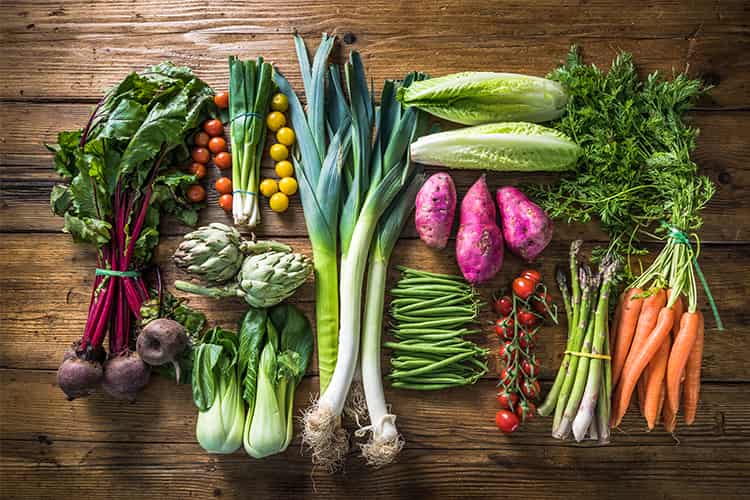
2. Paleo Diet
Paleo diet or stone age diet is an effective method to lose weight. The idea behind Paleo diet is to eat like a caveman to lose weight. The high protein and fiber diet can allow you to lose weight without cutting down on calories. This diet can reduce development of diabetes, coronary diseases, and cancer. You may include the use of fish, fruits, veggies, lean meat, healthy fats, legumes, nuts, seeds, and peanuts.
[sc:mediad]
Foods to Avoid:
- All processed foods
- Refined oils like canola
- Refined sugar
- Potatoes
- Dairy
- Salt
Limitations of the Paleo Diet:
It becomes difficult for vegetarians to follow paleo diet as more importance is given to lean meat. In addition, dairy products are not present in paleo diet as you may miss out on essential nutrients like calcium, magnesium, and potassium. Apart from the limitations, there are several cons to the Paleo diet. This is a low-sodium diet plan and does not include high calories.
Pav Bhaji is a fast food of Marathi cuisine. This Indian food contains bhaji, which is a thick potato-based curry, served with chopped onions, coriander, baked pav, and a dash of lemon. The baked pav bhaji served with butter on each side. It contains about 600 kcal per plate.
2. Paneer Bhurji
Paneer Bhurji is an excellent Indian breakfast dish. This is a simple dinner meal served with parathas or chapatis. It has a calorie content of 412 kcal per single medium-sized bowl.
3. Falooda
Falooda is a sweet and cold drink containing several ingredients. This drink is prepared by combining rose syrup with tapioca pearls, jelly pieces, basil seeds or psyllium, and vermicelli, along with ice cream, water, and milk. It has a calorie content of 300 kcal per single serving in a big glass.
4. Butter Chicken
This North-Indian dish is a popular type of chicken curry. Butter chicken can be ordered from all Indian restaurant menus. The chicken is prepared in creamy rich sauce made with butter, tomatoes, almonds, and cashews. This dish is also known as chicken makhani. It has a calorie content of about 490 kcal per serving.
5. Chole Bhature
This dish is known as chana puri and is a mixture of fried bread known as bhatoora and chole. The calorie content is 450 kcal per serving.
6. Ras Mallai
Ras mallai is a sweet and popular Indian dessert. Ras means juicy, while malai means cream. The calorie content of ras mallai is 250 kcal per serving.
7. Jalebi
Jalebi is a popular Indian sweet prepared by deep-frying a wheat-flour batter in circular shapes, which are then shaped in sugary syrup. The sweets are either served cold or warm. It has a chewy texture and sugary coating outside. The calorie content of jalebi is 459 kcal per serving.
8. Halwa
Halwa refers to sweet, dense confectionaries popularly served in India. It includes several ingredients like lentils, beans, nuts, sunflower seeds, and several veggies like squashes, yams, pumpkins, and carrots. The calorie content of halwa is 57 kcal.
9. Barfi
Barfi is a type of dessert which normally comes in the form of lozenge. It is usually prepared with thickening sugar and milk. Mild spices and dry fruits are added to the batter. It is then spread in a shallow, flat dish, and then cut into different pieces. These pieces are then decorated with edible silver foil. The calorie content of burfi is 103 kcal.
10. Onion Bhaji
Onion bhaji is an Indian snack, which resembles potato fritters. It is normally used as a topping for most Indian dishes or consumed as a snack too. The calorie content for onion bhaji is 190 kcal per two to three pieces based on size.
Food Items with Calories:
| Food Item | Calories |
|---|---|
| 1 egg | 150 |
| Butter (50 grams) | 350 |
| Milk (50 ml) | 33 |
| Cream (50 grams) | 105 |
| Cheese (50 grams) | 155 |
Vegetable Ingredients:
| Vegetables (25 grams) | Calories |
|---|---|
| Rice | 30 |
| Tomatoes | 4.5 |
| Onions | 12.5 |
| Cauliflower | 8 |
| Cabbage | 12 |
| Brinjal | 6 |
| Potato | 24 |
| Broccoli | 6.25 |
| Mushroom | 4.5 |
| Peas | 23.5 |
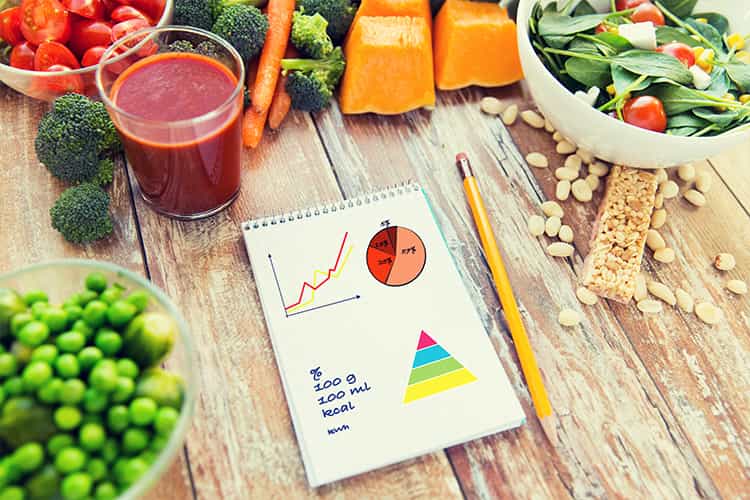
Tips of Taking Indian Food Diet Chart to lose weight
Following a diet plan is essential for good health. If you are keen about losing weight for improving health, then follow these simple tops to keep hunger at bay and keep your weight in check:
1. Increase intake of veggies and fruits
You should consume at least five portions of fruits and veggies daily. Fruits are beneficial for health especially whilst taken on an empty stomach. Hence, they make a great breakfast option. And you can also snack on it in the afternoon. But do not consume fruits immediately after meals.
2. Reduce intake of stimulants
You can reduce the intake of stimulants like caffeine, alcohol, and refined sugar. Taking caffeine and tea on an empty stomach can be harmful for health. Therefore, have tea and coffee moderately and after meals.
3. Have Breakfast daily
Breakfast is the most important meal of the day. It is essential to take breakfast that provides energy throughout the day. A bowl of porridge or cup of low-fat yogurt are good food options.
4. Drink plenty of water
Drinking water can help in digestion and act as detoxifying agent. Therefore, it is essential for you to drink at least eight glasses of water daily. In addition, drinking plenty of water can not only flush out your toxins, but also help maintain a healthy glowing skin. Water contains zero-calorie drink and low sodium. It also helps in flushing off toxins from the body and excess water weight. You can also a dash of lemon juice or honey or tender coconut oil to restore electrolyte balance in your body.
5. Eat smaller meals between gaps
Do not keep long gaps between your meals as the food you consume can get converted into fat instead of energy. It is not advisable for you to keep a gap of more than three hours in between your meals.
6. Do not starve
Do not ever starve yourself. This is not healthy at all. It will lead to negative effects. Maintain a balanced diet to meet your nutritional requirements.
7. Have last meal early
It is essential to have your last meal at least one to two hours before bedtime. Having dinner between 7 pm – 8 pm is an ideal time period.
8. Remove fat from food
While cooking meals, it is essential to remove all fat content. Processed meat like sausages and burgers should not be taken, as they contain high calorie content.
9. Restrict Calorie intake
You should check your calorie intake as it can determine your health. For this reason, fried foods, sweets, and pastries should be prevented.
10. Eat Healthy Snacks
You can replace processed or fried foods and snack on fresh or dried fruits, low-fat yogurt, whole grain cereals, and rice cakes.
Always keep these tips in mind and adjust your diet accordingly. Here is a four-week Indian diet chart for weight loss. Follow this diet chart for weight loss:
Indian Diet Chart for Weight Loss:
It is essential to maintain a balanced diet in order to stay healthy. Not only does it help in maintaining an ideal weight, but also provides our body with enough resistance to fight against all health problems. Women need about 2000-2200 calories daily. But when you tend to overeat, your weight issues will also increase. Hence, you need to bring about a balance in your daily diet for expanding more energy.
The 1500 indian food calorie chart is low in calories and includes nutritious foods, which can help in losing weight.
The Indian diet chart for weight loss should include six meals daily. Here is a four-week calorie chart for indian food.
Week 1
| MEALS | WHAT TO EAT |
|---|---|
| Early Morning (6:30 – 7:30 a.m) | 1 cup fenugreek soaked water |
| Breakfast (7:30 – 8:30 p.m) | 4 idlis with 1 cup sambar and ¼ cup coconut chutney + 1 cup green tea + 4 almonds |
| Mid-Morning (10:00 – 10:30 a.m) | 1 cup milk/soy milk or fruit juice |
| Lunch (12:30 – 1:00 p.m) | 3 rotis + 1 serving white rice + 1 cup dal + ½ cup mixed vegetable curry or chicken curry + 1 cup salad + 1 cup buttermilk (after 20 minutes) |
| Post Lunch (3:30 – 4:00 p.m) | 1 cup moong bean sprouts, 15 peanuts with salt pepper and lemon to taste Or 1 cup cucumber and carrot slices |
| Dinner (7:00 – 7:30 p.m) | 3 rotis + ½ cup mixed vegetable curry / chickpeas / fish + ½ cup yogurt + ½ cup salad + 1 cup warm milk with a pinch of turmeric before bed |
Total Calories- 1509
Benefits:
Having fenugreek seeds water in the morning can help to boost metabolism and flush out toxins. The use of veggies, fruits, legumes, dairy, etc. can help in preventing fat absorption and storage.
Tip:
Avoid taking too much oil. During this period, avoid taking ghee.
Results after one week:
If you stick on with this diet plan, you will see a noticeable difference in your looks. This is because, in the initial days, you will lose water weight. A healthy diet can prevent bloating. Hence, you can weigh less and feel light. But remember that you will not be able to lose fat if it is your main purpose. With that, let us take you through the diet plan for second week.
Week 2
| MEALS | WHAT TO EAT |
|---|---|
| Early Morning (6:30 – 7:30 a.m) | 1 cup fenugreek soaked water |
| Breakfast (7:30 – 8:30 p.m) | 2 moong daal chillas + 1 cup green tea + 4 almonds |
| Mid-Morning (10:00 – 10:30 a.m) | 1 cup seasonal fruits |
| Lunch (12:30 – 1:00 p.m) | 3 rotis + 1 serving of rice + 1 cup vegetable curry + 1 cup salad + 1 cup yogurt |
| Post Lunch (3:30 – 4:00 p.m) | 1 cup coconut water + ½ cup grapes/watermelon |
| Dinner (7:00 – 7:30 p.m) | 2 rotis + ½ cup mushroom/tofu/chicken curry + ½ cup blanched spinach/broccoli + 1 cup warm milk with a pinch of turmeric before bed |
Total Calories- 1497
Benefits:
As shown in the food calorie chart, moong daal chillas are packed with protein. Seasonal fruits can provide our body with essential vitamins and minerals. While, coconut water is enriched with natural electrolytes, and finally, blanched spinach or broccoli are rich sources of Vitamin and dietary fiber, which can help boost immune system.
Tip:
Do not dispose of the soft spinach stem or broccoli stalk as inedible. Instead, you can wash them and cut a ½ inch off the broccoli stalk or fresh spinach leaf. The rest of these veggie parts will be highly nutritious.
Results after two weeks:
By the end of the second week, you will begin to burn fat. You will start to feel lighter. All your problems like indigestion, gastritis, and weak immune system will get resolved in no time. You will start loving your new lifestyle and begin afresh for week three.
Week 3
| MEALS | WHAT TO EAT |
|---|---|
| Early Morning (6:30 – 7:30 a.m) | 1 cup water with juice of ½ a lime |
| Breakfast (7:30 – 8:30 p.m) | 1 cup vegetable oats + 1 cup green tea + 4 almonds/walnut |
| Mid-Morning (10:00 – 10:30 a.m) | 1 boiled egg and 1 kiwi Or 1 cup freshly pressed fruit juice |
| Lunch (12:30 – 1:00 p.m) | 2 servings of white rice + 1 roti (with or without ghee) + 1 cup rajma/ fish curry + 1 cup salad + 1 cup buttermilk |
| Post Lunch (3:30 – 4:00 p.m) | 1 cup green tea + 1 multigrain biscuit |
| Dinner (7:00 – 7:30 p.m) | 3 rotis + ½ cup daal + 1 cup vegetable or chicken stew + ½ cup salad + 1 piece of dark chocolate + 1 cup warm milk before bed |
Total Calories- 1536
Benefits:
Drink room temperature lime juice water to flush off toxins. Vegetables oats are healthy and help you to maintain a longer duration. One whole boiled egg is packed with water soluble and fat soluble vitamins, essential amino acids, and protein. One piece of dark chocolate can keep your sweet cravings in check.
Tip:
During the third week, you can allow one weekday to be your cheat day. You can consume 2000 calories instead of 1500 calories.
Results after third week:
By the end of the third week, you will weigh at least five pounds less and start feeling more active. Your concentration level can also increase. Having a cheat day can also help in improving your mood.
Week 4
| MEALS | WHAT TO EAT |
|---|---|
| Early Morning (6:30 – 7:30 a.m) | 1 cup water with juice of ½ a lime |
| Breakfast (7:30 – 8:30 p.m) | ½ cup vegetable upma + 1 cup milk / green tea + 2 almonds |
| Mid-Morning (10:00 – 10:30 a.m) | 1 cup seasonal fruits |
| Lunch (12:30 – 1:00 p.m) | 3 rotis + 1 cup vegetable curry + 1 cup lentil/beans + ½ cup salad + ½ cup yogurt |
| Post Lunch (3:30 – 4:00 p.m) | 1 cup coconut water or freshly pressed fruit juice or green tea |
| Dinner (7:00 – 7:30 p.m) | 1 roti + 1 serving of brown rice + 1 cup daal/fish/chicken/mushroom + ½ cup boiled vegetables + 1 cup warm milk before bed |
Total Calories– 1486
Benefits:
Consuming fruits and veggies can allow you to keep your weight control in check. The basic meals can provide your body with protein, minerals, good carbs, vitamins, and healthy fats.
Tip:
Try to consume at least five different types of veggies and three different types of fruits daily.
Results after fourth week:
After you stick to this calorie chart for fruits and veggies, you can clearly see the results. You will look much slimmer and become more active. But this diet plan will fail if you consume 1500 calories and just sit all day. You should exercise alongside. Swimming, running, walking, dancing, cycling, and yoga are good forms of exercises.
Dos and Don’ts:
- Do not include sugar and starch in your diet, because starchy foods include insulin secretion, which leads to fat storage in our body.
- Eliminating starchy foods can allow you in controlling insulin secretion and aid in flushing off extra sodium, which causes bloating. It can also cut off extra water weight.
- Instead of consuming starchy veggies, you can include eggs rich in Omega-3, fish, and seafood like salmon, trout, lobsters, and shrimps. You can also add beef, chicken, bacon, pork, and lamb to your diet.
- You should include 20-50 grams of protein every day. Taking protein daily can speed up your metabolism and keep you satisfied for longer hours.
- Do not feel guilty of filling your plate with healthy low-carb veggies, like broccoli, sprouts, lettuce, cauliflower, spinach, kale, and celery. You can add these veggies with your salads, grilled or steam low-calorie dips, and stews.
- You can consume 20-50 grams of low-carb veggies. They are rich in fiber, vitamins, and minerals that are essential for maintaining a healthy body.
- You can also add butter, tallow, and coconut oil to your diet to meet with your taste. But have these foods in moderation.
- For losing weight on a rapid note, try exercising as well.
- Always follow a healthy method for losing weight. Consult with a dietician to chart your diet plan.
So are you all ready to follow this wonderful Indian calorie chart for Indian food, vegetables, and fruits? Do not forget to share your experiences with us in the comments section below. Stay healthy and happy.
